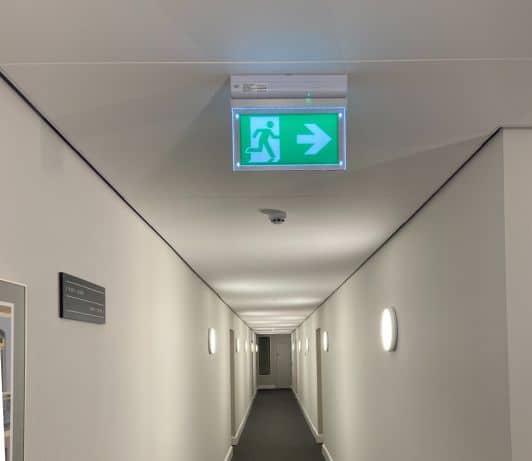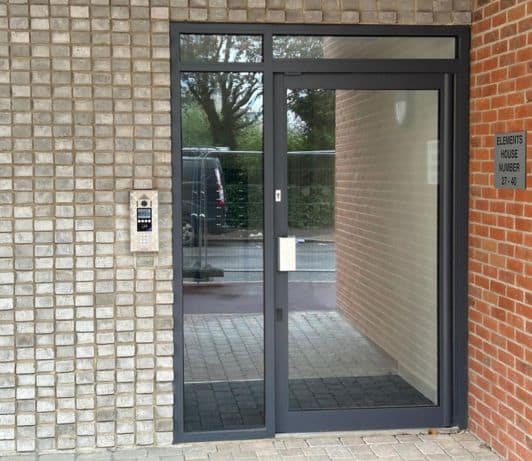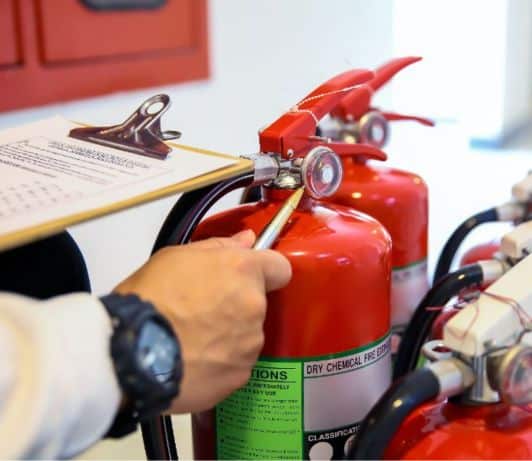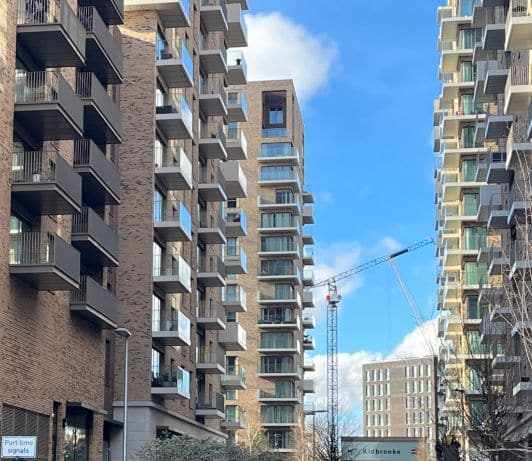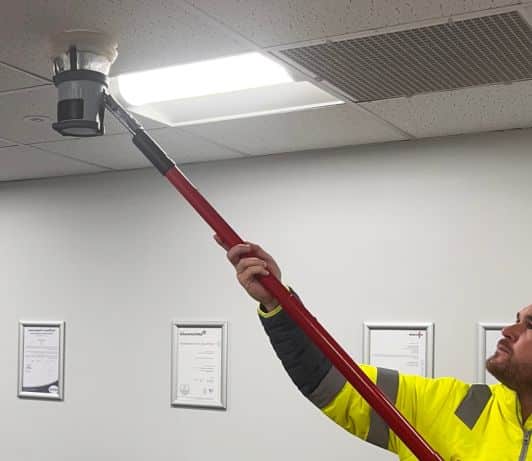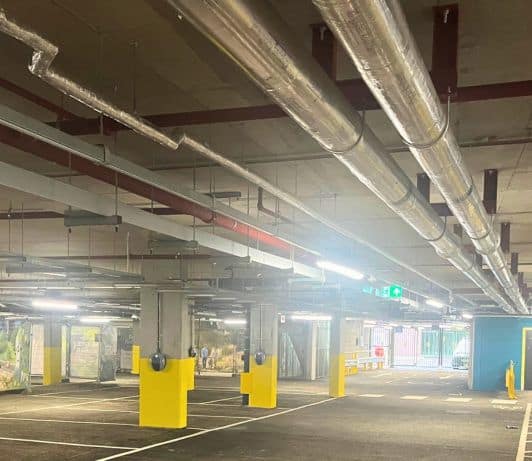Safeguard Your Sanctuary With These Home Fire Safety Tips
Every homeowner’s worst nightmare is the sudden, destructive force of a fire. Not only can fire cause immediate damage, tearing your home apart as soon as the flames catch but there is also a serious risk of more significant loss – loss of your home, all the memories it contains and, most importantly, the lives within.
This is why home fire safety is so important, yet can often be overlooked until it is too late. Keeping your home safe and secure means considering all threats and with home fires being one of the biggest causes of significant loss they also need to be considered. Protecting your home means covering all areas to protect your memories and your future with your family.
At Nomico Fire & Security, we understand the vital role that home fire safety plays and provide a range of solutions across the region. With our expertise in home fire safety and our commitment to keeping our clients safe, we can help you protect your home and family in the event of the biggest threats imaginable.
In this guide, we are exploring the three comprehensive steps you need to follow to safeguard your home and ensure the well-being of your loved ones.
Understanding the Importance of Home Fire Safety
Home fire safety is an essential part of your safeguarding investments and routine, but many people overlook it.
Despite the major threats that fires can pose to your home and the lives within it, many do not think it can happen to them and instead take precautions to protect their homes from other threats, like security cameras for burglar deterrence.
While home security is important, you cannot rest easy without taking precautions against fire hazards too. Fires can cause unprecedented damage – not only by destroying property but also by putting lives at risk. Implementing a robust fire safety plan can minimise these risks and ensure prompt action in case of an emergency, allowing you to play an active role in the protection of your home and family.
A home fire safety plan can be implemented through three crucial steps, allowing you to prevent fires in the first place while also ensuring a safe evacuation in the worst-case scenario.
Step 1: Install and Maintain Smoke Alarms
The first step in protecting your home from fire is to install fire alarms. Smoke and fire alarms are your first line of defence, as they provide early warnings that can save lives and reduce property damage.
According to fire safety experts, homes with functional smoke alarms have a significantly lower risk of fire-related fatalities. Nomico Fire & Security is a premier fire alarm installer in Essex, London and the surrounding Home Counties with over 40 years of experience in the field.
Over the years, we have helped many homes and businesses install fire alarms and provide the necessary maintenance to keep this first line of defence in optimal condition. We understand deeply how important fire alarms are for home fire safety and can help you make the right decision.
How To Choose the Right Smoke Alarms
There are many options now available for home smoke alarms, ensuring complete protection no matter what kind of property you own. For maximum protection, consider installing both ionisation and photoelectric alarms. Alternatively, dual-sensor alarms that combine both technologies are also available and can allow for a quicker installation.
Ionisation alarms are more responsive to flaming fires, while photoelectric alarms are better at detecting smouldering fires. Both of these alarms combined ensure you will be alerted in the event of any home fire and can quickly take the necessary steps for protection.
Not only do you need to consider the types of alarms you need to install at home, but also their appropriate placement locations. For comprehensive coverage in the home, place smoke alarms in every bedroom; outside each sleeping area, and on every level of your home, including the basement so you can be altered to any fire in any location.
Proper Installation and Maintenance
Proper installation and maintenance of smoke alarms are vital to ensure they function correctly. Nomico Fire & Security offer professional installation of all fire alarm systems and can ensure your home is kitted out to protect against all hazards. During home fire safety installations, we ensure that smoke detectors and fire alarms are easily accessible, so they can be continuously maintained, while also in prime locations to provide early detection of risks.
This is why smoke alarms are installed high on the wall or the ceilings, as smoke rises. Smoke detectors must have an unobstructed placement, which is why they should not be installed near windows, doors, or ducts as drafts might interfere with their operation.
Once fire alarms have been installed across the home, the commitment to home fire safety does not end here. Fire alarms and smoke detectors need to be regularly tested and maintained to ensure they are in prime working condition to offer the early alert you need.
Smoke alarms should be tested monthly, which can be done by pressing the test button on the device. If they do not make a noise, then the batteries need to be replaced. Batteries should be replaced at least once a year, regardless, to ensure the smoke detectors keep working. The whole smoke alarm unit should be replaced every ten years to ensure optimal performance.
Step 2: Create and Practice a Fire Escape Plan
Installing smoke alarms throughout your home is the first step to improving home fire safety, but what happens when they go off? This is why developing a well-structured fire escape plan is essential.
A fire escape plan outlines the steps you and your family need to take to evacuate your home safely during a fire and takes your fire safety to a whole new level.
Designing Your Fire Escape Plan
When designing your fire escape plan, you first need to identify two exits from every room in your home which can be used in the event of a fire. These exits can be doors or windows, as long as they allow for a swift exit outside of the home.
For these exits to be effective, you need to ensure that all windows can be easily opened and are not blocked by furniture or security bars as this will hinder your safety. If you live in a multi-storey home, consider investing in escape ladders for the upper floors to allow for a swift evacuation during emergencies.
To find the best exits for each room, take some time to draw out your home’s layout. On this blueprint, you can mark all possible escape routes and exits so you have a focus and know what areas need to be addressed for improved fire safety.
Once you have highlighted the fire exits and safest routes from each room in the house, you need to designate a safe meeting place outside of your home. If each family member is escaping the home from separate rooms, you need to have a space where you can all gather after evacuating to ensure everyone is okay. This meeting place should be a safe distance from your home and easily accessible for all.
Practising Your Fire Escape Plan
Designing a plan is the first step, as the family need to be involved so everyone understands what to do during an emergency. This is why it is recommended that you plan your fire escape plan regularly to ensure everyone knows what to do during the worst-case scenario.
All household members need to be present and involved in this practice. Regular fire drills are a great way to ensure that everyone understands how to act, ensuring they can perform a calm and swift evacuation if and when required.
Fire drills should be done at least twice a year and at different times of the day to practice evacuating from different rooms using various escape routes.
For homes with children, you need to take the time to teach each child how to escape on their own in case you are unable to assist them.
During these fire drills, reinforce the importance of staying low to the ground to avoid smoke inhalation and the practice of feeling doors for heat before opening them. If a door is hot, instruct everyone to use an alternative exit and highlight these in your plan and fire drills.
This constant reminder can allow for a safe evacuation should the event arise and reduce the risk to life. Commit yourself to developing a familiarity with your fire escape plan and get the whole family involved so everyone knows what to do in the case of a real emergency.
With practice, you can reduce panic and confusion during true emergencies and increase the likelihood of safe evacuations.
Step 3: Implement Fire Prevention Measures
While it is a good idea to practice how to act during a fire emergency, prevention is the best tool you can have for home fire safety. Preventing fires from happening, or from spreading should they occur, in the first place is the most effective way to protect your home and family.
Implementing fire prevention measures can significantly reduce the risk of a fire occurring in your home and there are various ways you can do this across your property.
Kitchen Safety
The kitchen is the most common area for home fires to start and therefore needs particular attention when developing fire protection measures.
Common sense can be a great tool for fire prevention, such as always staying in the kitchen when cooking – especially when using the stove. Likewise, keeping flammable items, such as kitchen towels and paper products, away from the stove to prevent them from catching on fire.
Once you have finished in the kitchen, take a moment to ensure that all cooking appliances are turned off. It is also a good idea to install a fire extinguisher in the kitchen and learn how to use it in case of a small fire, as catching it early can prevent a larger issue.
Electrical Safety
Faulty electrical systems are a leading cause of home fires and can be extremely dangerous. This is why you need to regularly inspect your home’s electrical wiring as well as any outlets and appliances across the home. Check all of these for signs of wear or damage, and if you do notice this ensure you seek professional electricians to repair or replace them.
It is also incredibly important to avoid overloading electrical outlets across the home. Surge protectors can be a great tool to avoid damage if you are low on space or have particularly heavy electrical areas.
Get into the practice of unplugging any appliance that is not in use and try to avoid using extension cords as permanent solutions, as these are subject to overheating.
If you do notice any issues or are concerned about electrical hazards across your home, hire a licensed electrician promptly.
Heating Safety
During colder months, heating equipment such as space heaters, fireplaces, and wood stoves can pose fire risks. While they can be useful, you need to take extra precautions to avoid these fire hazards such as keeping flammable materials at least three feet away from heating equipment and making sure to turn everything off when not in use.
For homes with a traditional fireplace, you need to ensure that any chimneys and vents are cleaned and inspected annually so they will not pose a risk to your home.
If you do need additional heating across the home, opt for space heaters with automatic shut-off features and never leave them unattended.
As well as taking active steps when heating your home, you should also rely on a carbon monoxide detector. Installing a carbon monoxide detector alongside the smoke alarms across your home offers additional protection, as these can detect harmful gases from heating equipment which can cause a threat to life.
Smoking Safety
If you smoke, do so outside and use a deep, sturdy ashtray that can keep all ash and cigarette butts in place.
Make sure that you never smoke in bed or when feeling drowsy, as it can be easy for you to lose control of the cigarette and start a fire. After you have finished smoking, you need to ensure that cigarette butts are completely extinguished before disposing of them.
Whether you are a smoker or not, it may be a good idea to consider implementing a no-smoking policy inside your home to reduce fire risks further, forcing anyone who does smoke to go outside.
General Home Fire Safety
There are some other ways you can reduce the risk of fire throughout the home, no matter what room you are in or what you are doing. A lot of these fire safety measures rely on common sense, but should not be underestimated as they can be highly effective.
For example, keeping matches and lighters out of reach of children; storing flammable liquids, such as gasoline and paint thinners, in approved containers and away from heat sources; and relying on fire-resistant materials in your home, such as fire-retardant curtains and rugs, can go a long way in protecting your home, assets and family.
As well as taking these steps to reduce fire risks and prevent flames from spreading in emergencies, you need to maintain an open conversation with your family or home occupants about fire safety. Take the time to educate all household members about the home fire safety practices you are implementing and encourage them to report any potential hazards.
Nomico Fire & Security: Your Home Fire Safety Partner
At Nomico Fire & Security, we are dedicated to helping you protect your home from fire. We have over 40 years of experience in fire and security, working across Essex, London and the Home Counties to protect homes and businesses from the biggest risks.
Fire is a huge risk in all homes and can cause significant loss, not only to your home and the items inside but also to life. This is why you need to take an active role in protecting your home from fire and implement the three steps to home fire safety, as outlined in this guide.
While there is a lot you can do yourself to protect your home, elements such as inspections, fire alarm installations and maintenance may require professional help. Our expert team is here to provide you with the best home fire safety solutions tailored to your needs.
Contact Us Today
We offer fire alarm installation and maintenance, as well as a range of security solutions, to help protect your home as part of our home fire safety package.
If you have any questions or require further assistance, please do not hesitate to contact us – your safety is our priority.

